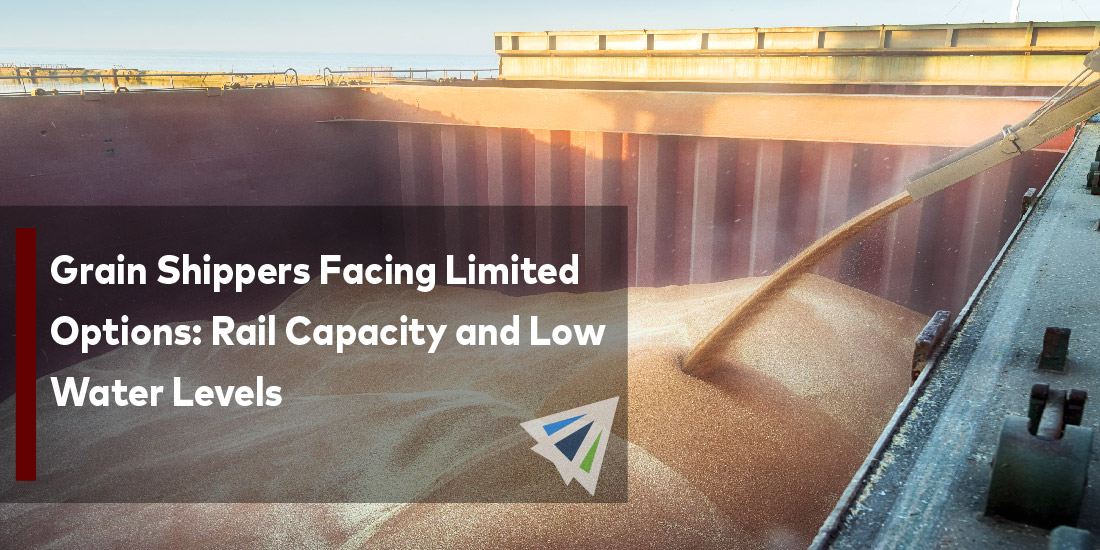Grain Shippers Facing Limited Options: Rail Capacity and Low Water Levels
The Mississippi river is actually a major channel for U.S. produce shipments. It accounts for an overwhelming majority of cargo movement for soybean and grains and is one of the primary conduits for exports via barge. And while we can heavily rely on modes such as air or ocean shipping, when you start dealing with rivers, it gets a little less predictable.
While you never have to worry about low water levels for ocean shipping, the Mississippi is rather volatile. Despite remaining relatively reliable for the last several years, the last year has proven challenging to shippers using the channel as water levels have reached an all-time low. These are forcing farmers and producers shippers to re-evaluate their logistics plans and begin reaching for their plan B’s, C’s, and D’s as they scramble to get perishable goods to their final destination.
Unfortunately, the low water levels have had a direct impact on capacity, and the results are looking grim for shippers. Due to the low water levels, channels are narrower and capacity has been greatly tightened. Consequently, barge rates have skyrocketed to some of the highest rates we’ve seen in years.
Due to the perishable nature of produce, farmers and produce exporters are essentially faced with two potential options: they can either store their produce for longer than they normally would and hope for water levels to rise, or they can truck a portion of them to local livestock markets. They also have the option of intermodal rail transport if the produce is being exported, though capacity is even tight in the rail industry, and both accessibility and available routes depend on your location. A looming rail strike also presents potential risk to produce exporters who are entertaining the idea.
Abundance of Water Desperately Needed
Experts claim we are in a rather unpredictable season, as the outcome of water levels over the next couple weeks is unknown. If the weather heats up enough to melt the snow but keep the ground frozen, the early snowfall that’s accumulated in the upper Midwest regions could melt and runoff into the river, significantly raising the water levels. However, if that doesn’t happen, winter will keep the snow frozen and water levels would remain low until Spring. Currently, much of the water of the Mississippi is soaking up into the land, effectively “drying” up the river.
If precipitation, rain fall, and melted snow all occur in significant volume, issues along the Mississippi could improve quickly. But at this point, it’s entirely unpredictable as to how the season will unfold. In addition, the hot and dry conditions are predicted to make the 2022-2023 harvest season (which stretches from September to August) is expected to be relatively low in comparison with prior years.
The Mississippi isn’t the only river experiencing low water levels (though it is the most active from a shipping-industry standpoint.) In addition to the Mississippi, the Ohio, Missouri, and Illinois rivers have been drying up as well over the last several weeks.
Rail companies and truckers are trying to work with grain exporters to alleviate pressure on the produce industry, but it’s unclear exactly how effective they can be in handling grain exports on top of current commitments. While the future is a little uncertain as to what will happen with shipments along the Mississippi, we will come to a better understanding of what to expect over the coming weeks as we transition into the winter season.
